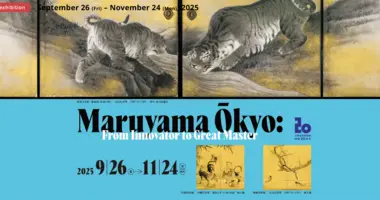The Mitsui Memorial Museum 三井記念美術館
- Published on : 27/02/2019
- by : S.V.
- Youtube
The museum of a clan of merchants
In Nihonbashi, in the heart of the historic district of the Japanese capital, the Mitsui Memorial Museum houses more than 4,000 Japanese and Asian works and art objects; a prestigious collection built up by the influential Mitsui family since the Edo period (1603-1868).
Mitsui zaibatsu
Originally from Matsusaka in Mie Prefecture, the Mitsui family has managed to form over the centuries one of the most important zaibatsu in Japan .
The kimono shop, Echigoya , established in Edo in the Nihonbashi district in 1673 by Mitsui Takatoshi (1622-1694) constitutes the first milestone of the future Mitsui family empire. This retail clothing store or gofukuya quickly became a thriving business.
This prosperity fully benefits the Mitsui clan, which quickly develops other activities; especially financial services . Mistui then carries out financial operations on behalf of the shogunate by converting the taxes paid in rice into money. Mitsui is particularly famous for founding a major financial institution in Japan, Mitsui Bank in 1876; and to have operated until 1904 Mitsukoshi Department Stores , the heir depâto of Nihonbashi's parent boutique, Echigoya.
These extremely lucrative activities allow the Mitsui family to ultimately count 150 companies within its zaibatsu before the Second World War.
A clan's collection
For more than three centuries, successive generations of Mitsui succeeded each other at the head of the conglomerate of companies. But the search for profit and the development of family activities were not the only leitmotif of the clan. The Mitsuis also worked hard and patiently to build priceless art collections .
Thus the need to protect these works gave rise to the Mitsui Bunk o foundation . Created in 1965, its mission is to preserve and enhance this precious cultural heritage to the best of its ability; not only in the eyes of the Mitsui family but also for the whole nation. To do this, a museum, the Mitsui Bunko Annex, was created in 1985 in the district of Nakano .
In 2005, the foundation chose to move the museum and invest in a highly symbolic place: Mitsui's head office in Nihonbashi; where it all started . The collections then take place in a neo-classical building , designed by the American architects Trawbridge and Livingstone in 1929. This Western-style building, listed as an Important National Cultural Property , adjoins the Nihonbashi Mitsui Tower; a brand new skyscraper built from 2002 to 2005 and measuring 192 meters in height. It is also through this glass and steel tower that you enter the Mitsui Memorial Museum.
The treasure museum
The Mitsui collections include more than 4,000 works and art objects : paintings from the Maruyama and Shijo schools, books, ceramics, Noh theatrical costumes, tea ceremony utensils, swords and calligraphy by masters of the brush such as Fujiwara no Teika (1162-1241).
This is indeed an exceptional collection comprising no less than 6 National Treasures and 75 Important Cultural Properties. These treasures include the "Pines under the Snow" by the painter Maruyama Ôkyo (1733-1795) and the "Unohanagaki" shino tea bowl from the Azuchi Momoyama period (1573-1603).
In addition to the Japanese and Asian art collections, the museum houses one of the most important philatelic collections in the world . These 130,000 stamps , of all origins, were collected by Mitsui Takaharu (1900-1983).
The reconstruction of the Jô-an tea house will certainly be one of the highlights of your visit. The latter, built in 1618 at the Shoden Eigen-in, a sub-temple located within the Kennin-ji compound in Kyoto, by order of Oda Nagamasu (1547-1622), was the property of the Mitsui for several decades . This daimyo, a pupil of the tea master, Sen-no-Rikyu, prepared the tea there for his guests.
It was in 1901 that this tea pavilion was sold to the zaibatsu. Mitsui Takahashi then had it installed in his Tokyo residence in 1908. The businessman organized numerous tea ceremonies there. Thanks to its transfer in 1937 to Oiso in Kanagawa prefecture, the Jô-an escaped the bombardments that hit the Japanese capital.
Classified as a National Treasure in 1951, the tea house was once again moved in the early 1970s to the city of Inuyama by its new owner, the Nagoya Railway Company! Before your visit to the museum, find out about the schedule of tea ceremonies held in the replica of Jô-an.
Address, timetable & access
Address
Phone
03-5777-8600Timetable
3 mins walk from Mitsukoshimae station (exit A7).Price
Adult price: 1000 yen. Child: 500 yen.Access
Open from 10 a.m. to 5 p.m. Closed on Mondays.Website
http://www.mitsui-museum.jp/english/english.html





































